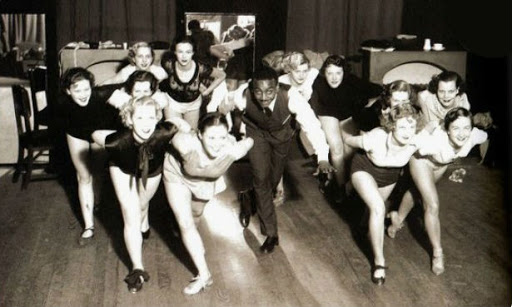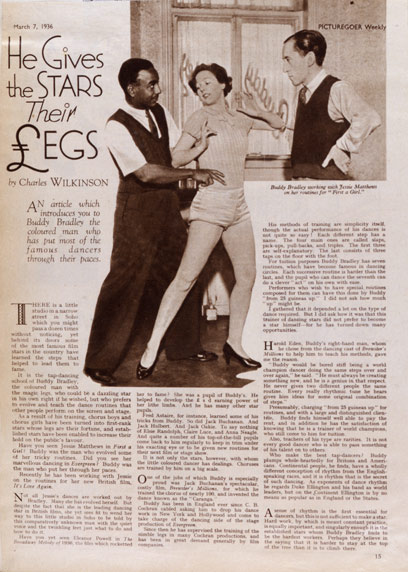
A few months ago I attended an online talk by Annette Walker of Tap Dance Research Network UK, where she was sharing some of her research on the forgotten African American choreographer ‘Buddy Bradley: Choreographing British Film and Theatre’.
He was a pioneer here in the UK, but most people haven’t even heard of him!
Who: Clarence ‘Buddy’ Bradley Epps
Born: Pennsylvania, USA in 1905 and was an orphan by his teens.
Died: 1975 in New York
Family: Married Dorothy, known as ‘Dee’.
Training: Largely self-taught in Tap dance, Charleston and the other jazz dances, influenced by the environment of the Harlem renaissance of New York City.
Known as: The UK’s answer to Busby Berkeley
Career: Being black in the US at that time, he was not credited for much of his early choreography of several Broadway shows. This changed when he was invited to work in the UK on the musical Ever Green in 1933 and decided to settle here. (This is a common theme when you look at the African American performers, like Josephine Baker and Will Gaines, who also found success and credit for their work once they moved to Europe).

Notable Students: Fred and Adele Astaire, Ruby Keeler, Eleanor Powell. Buddy was the go-to person in London for tap training, and he taught lots of the UK’s big names, including Jack Buchanan, Jessie Matthews, Lionel Blair and the late Bruce Forsythe, John Mills and Roy Castle. He had his own dance studio at 25a New Compton Street and later Denman Street in Soho, London, called the Buddy Bradley School of Stage Dancing. By 1950 the school had over 500 students!
Teaching style: Apparently he liked his dancers to move across the stage rather than hoof on the spot. He taught in routines, like Henry Le Tang (rather than the ‘watch me and pick it up’ style of some of the masters) and he was known to be a ‘task master’.
Some of his film & stage choreography credits: High Yellow (1932), Ever Green (1934), Radio Parade (1934), A Fire Has Been Arranged (1935), Anything Goes (1935), Brewster’s Millions (1935), Blackbirds (1936), This’ll Make You Whistle (1936), I Can Take It (1939), Full Swing (1942), Something in the Air (1943), It’s Time to Dance (1943), Sauce Piquant (1950)
Quotes:
People lose sight of the fact that all these modern dance creations…beginning with the Charleston…the Black Bottom, Pickin’ Cotton, Beguine, Rhumba and Carioca, all have African origin.
When I set out to conceive such a dance as the Caranga, I first ask “what is the background?”
Unfortunately, there really isn’t a lot written about him. He wasn’t even mentioned on British television until about thirty years after his death, when the actor John Mills tap danced across the stage on the popular evening talk show Parkinson, and he was asked who taught him to dance – Buddy Bradley!
Buddy is mentioned in the following books that I used as my sources for this post:
- Bourne, Stephen, Black in the British Frame (2005)
- Stearns, Marshall & Jean, Jazz Dance: The Story of American Vernacular Dance (1994)
- Valis Hill, Constance, Tap Dancing America (2014)
